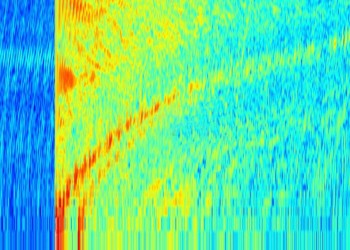A single strike of lightning can contain 1,500 megajoules of energy. That converts to six months’ worth of power for a 100-watt lightbulb. It’s enough shock to be a leading cause of weather-related death in the US.
LIGHTNING…
The odds of becoming a victim in the U.S. in any one year is 1 in 700,000. The odds of being struck in your lifetime is 1 in 3,000. –National Geographic News
Scientists have been studying the mystery of thunder and lightning for years, but many questions remain. Unlocking the mysteries behind this incredible force is one important step in the direction of understanding the workings behind the natural occurrence, and possibly lessening the potential risks.
THUNDER…
Is the sound caused by lightning. Depending on the distance and nature of the lightning, thunder can range from a sharp, loud crack to a long, low rumble (brontide). –Wikipedia
Making history, Haher A Dayeh, a heliophysicist at Southwest Research Institute in San Antonio, captured – for the first time – an acoustic image of thunder. Dayeh and his team shot a rocket trailing copper wire into a storm cloud with the intent of triggering a bolt of lightning. The plan was a success, and the team was able to capture sound waves from the heated air surrounding the bolt, using fifteen acoustic test and measurement microphones.
The sound from thunder is created by a swift increase in pressure and temperature surrounding the bolt of lightening. The rapid expansion of air resulting from a sudden increase in temperature and pressure near the bolt produce a shock wave. The sound, comparable to a sonic boom, is often called the peal of thunder and has a clapping, cracking sound. These noises are measurable, with the right type of acoustical test and measurement equipment (and some brave acoustical engineers!).
From the acoustic images, researchers were able to determine the amount of energy forming the bolt and how much it radiated as sound. Dayeh explains, “Prediction and protection are almost impossible if we don’t understand the process in the first place.”
If you’re interested in learning more about noise test and measurement – or simply have questions, contact a CENSEO Acoustical Engineer! We’re happy to help.
Source: Popular Science

